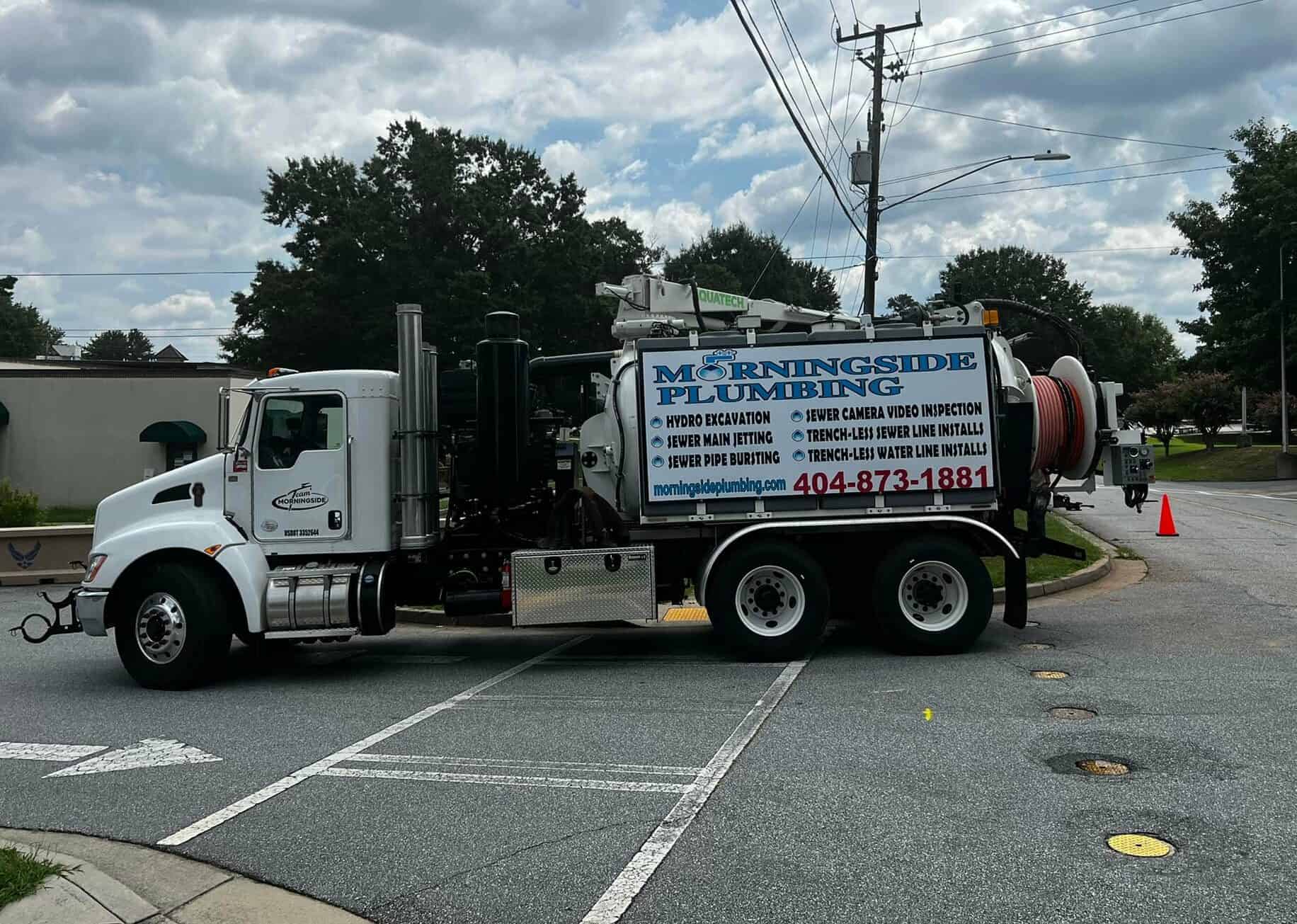Emergency Pipes and Home Heating: What to Do When Catastrophe Strikes

The Most Effective Ways to Save Water in your house
Conserving water at home is less complicated than you could think. By making a couple of simple adjustments, you can considerably reduce your house's water intake and lower your energy expenses. From upgrading to high-efficiency devices to adopting water-wise landscape design, there are many methods to save this precious resource. While these approaches might call for a preliminary financial investment, the lasting benefits are well worth it. However the genuine inquiry is, are you ready to take action and start conserving water today? The option is yours, and the effect you can make may just amaze you.
Trick Takeaways
- Install water-efficient devices like low-flow showerheads, high-efficiency toilets, and energy-star rated cleaning equipments to decrease water and power intake.
- Regularly inspect plumbing and repair leaks to stop water waste and high utility bills.
- Take on water-conscious landscape design techniques by using drought-tolerant plants, mounting wise irrigation systems, and integrating permeable surfaces.
- Modify daily water usage behaviors, such as restricting shower time, turning off taps while cleaning teeth, and running full loads for washing and recipes.
- Take into consideration rainwater harvesting and greywater reuse systems to minimize reliance on metropolitan water resources and reduced long-lasting prices.
Mounting Water-Efficient Appliances
One of one of the most efficient means to save water in your home is by setting up water-efficient home appliances, such as low-flow showerheads, high-efficiency toilets, and energy-star rated cleaning makers.
Low-flow showerheads can decrease your water usage by as much as 50% while still providing a gratifying shower experience. High-efficiency toilets, on the various other hand, can conserve up to 4,000 gallons of water per year contrasted to older designs.
Updating your washing device to an energy-star rated model can also make a significant difference. These devices use up to 50% much less water and power than standard versions.
When it pertains to your dish washer, try to find one with a high effectiveness rating. Newer dish washers can use just 3 gallons of water per cycle, considerably much less than older designs.
Repairing Leaks and Minimizing Waste
Vigilantly addressing leakages and decreasing inefficient water use can substantially enhance your water-saving initiatives. Regularly examining your pipes for drips or seepage and without delay fixing any kind of problems can conserve thousands of gallons monthly.
Furthermore, taking on basic behavior changes, like turning off the tap while cleaning your teeth or doing recipes, can substantially reduce your family's total water usage.
Leak detection is crucial, as also tiny, undiscovered leaks can significantly affect your water costs and the setting. Completely inspect faucets, showerheads, pipes, and device connections for any type of signs of leak.
Use water meter readings and your utility bill to determine unusually high use, which might suggest a covert leak. Maintaining your plumbing via normal inspections and punctual repairs warranties efficient water flow and avoids costly water waste.
Embracing Water-Conscious Landscaping Practices
Past handling indoor water usage, you can further enhance your home's effectiveness by adopting water-conscious landscape design practices.
Purposefully picking drought-tolerant plants and implementing effective watering systems can substantially lower your outside water consumption. One reliable method is to make use of xeriscaping methods, which focus on indigenous plants adjusted to your regional environment.
By choosing indigenous species, you'll create a thriving landscape that requires minimal watering. Additionally, take into consideration including rainfall gardens, permeable surfaces, and wise irrigation controllers to decrease water waste.
These measures not just preserve sources yet likewise enhance your property's visual charm and ecological worth. With a little preparation, you can transform your exterior spaces into a water-wise sanctuary that aligns with your sustainability objectives.
Changing Daily Water Use Habits
Alongside optimizing your outside rooms, you can make straightforward adjustments to your day-to-day water usage behaviors that collectively contribute to considerable preservation.
For instance, you can begin by tweaking your shower regimen. Limit your shower time to 5 minutes or less, and set up a water-efficient showerhead to minimize flow. When cleaning your teeth, turn the faucet off while rubbing instead of allowing it run continually. These small steps add up rapidly, saving gallons of water every day.
Furthermore, bear in mind water use when doing washing and washing meals. Just run complete tons, and think about energy-efficient appliances that use less water.

In the cooking area, thaw frozen foods in the refrigerator rather than under running water. You can additionally accumulate rain to water indoor plants, further minimizing your reliance on treated local water.
Rain Harvesting and Greywater Reuse
Rainwater harvesting and greywater reuse are two extra methods you can implement to drastically decrease your house's freshwater consumption. Gathering rain and recycling greywater, the wastewater from sinks, showers, and washing machines, enables you to supplement your indoor and outdoor water requirements without relying exclusively on the local supply.
With a rain harvesting system, you can catch, filter, and shop rainwater that you can after that use for jobs like landscape design, washing automobiles, and flushing bathrooms. Rain purification ensures the water is tidy and secure for these non-potable usages. https://harlesdenplumber.co.uk
Greywater systems, on the various other hand, divert utilized water from choose plumbing components to water your yard and yard. This lowers the stress on your septic tank or local wastewater treatment while giving nutrient-rich water for your plants.
Investing in these water-saving modern technologies requires some in advance expenses, but the long-term cost savings on your utility bills and the environmental advantages make them rewarding factors to consider for eco-conscious home owners.
Frequently Asked Inquiries
Exactly How Can I Determine My Home's Daily Water Consumption?
To determine your house's daily water intake, begin by examining your water meter frequently.
By tracking your water use with time, you can obtain a common sense of your everyday intake patterns.
Several utilities also supply online devices or applications to assist you monitor your intake.
Take note of spikes or adjustments in your use, as they can indicate leakages or other concerns that may require resolving.
What Are the Conveniences of Switching Over to Water-Efficient Showerheads?
Switching to water-efficient showerheads can supply various benefits.
Modern showerhead types, like aerating or high-efficiency versions, can reduce your water usage by approximately 40% without giving up efficiency.
Installation is commonly simple, and you'll discover a difference in your water bills.

Beyond saving cash, you'll be doing your part to save this precious source.
Follow easy installation pointers, and you'll delight in a more lasting, water-wise lifestyle.
Exactly How Can I Decrease Water Use During Laundry Cycles?
To decrease water usage during washing cycles, try these convenient tips.
Use water-efficient home appliances like front-loading cleaning devices that use much less water per lots.
Furthermore, only run full lots to optimize effectiveness.
When feasible, select shorter clean cycles and utilize the appropriate water level setting for the size of your tons.
These easy laundry pointers can help you save water and conserve money on your energy costs.
Does Water-Efficient Landscaping Require More Maintenance?
Water-efficient landscape design does not always need more upkeep. Actually, it can actually be much less job!
By thoroughly choosing drought-tolerant plants and creating your landscape to decrease water demands, you'll invest less time watering and even more time enjoying your exterior room.
The trick is to concentrate on plant selection - pick native or adapted varieties that prosper in your regional environment.
With the best landscape design, you can develop a lavish, low-maintenance oasis that saves water.
Is It Lawful to Utilize Rain for Indoor Purposes?
Yes, it's typically legal to use rain for interior functions in many regions, though regulations can differ.
Rain collecting systems that carry rainfall right into your home's pipes are a fantastic means to supplement your interior water.
Simply make certain to comply with regional codes and guarantee your system is properly installed to prevent any type of lawful concerns or potential health and wellness risks.

With the best setup, you can take advantage of this complimentary, sustainable water source.
Conclusion
You can conserve a significant quantity of water in the house by setting up water-efficient devices, fixing leakages, embracing water-conscious landscape design, and changing your day-to-day behaviors.
Collecting rain and recycling greywater even more contribute to conservation efforts.
Implementing these techniques not only decreases your water consumption but also leads to lasting financial savings on your energy expenses.
